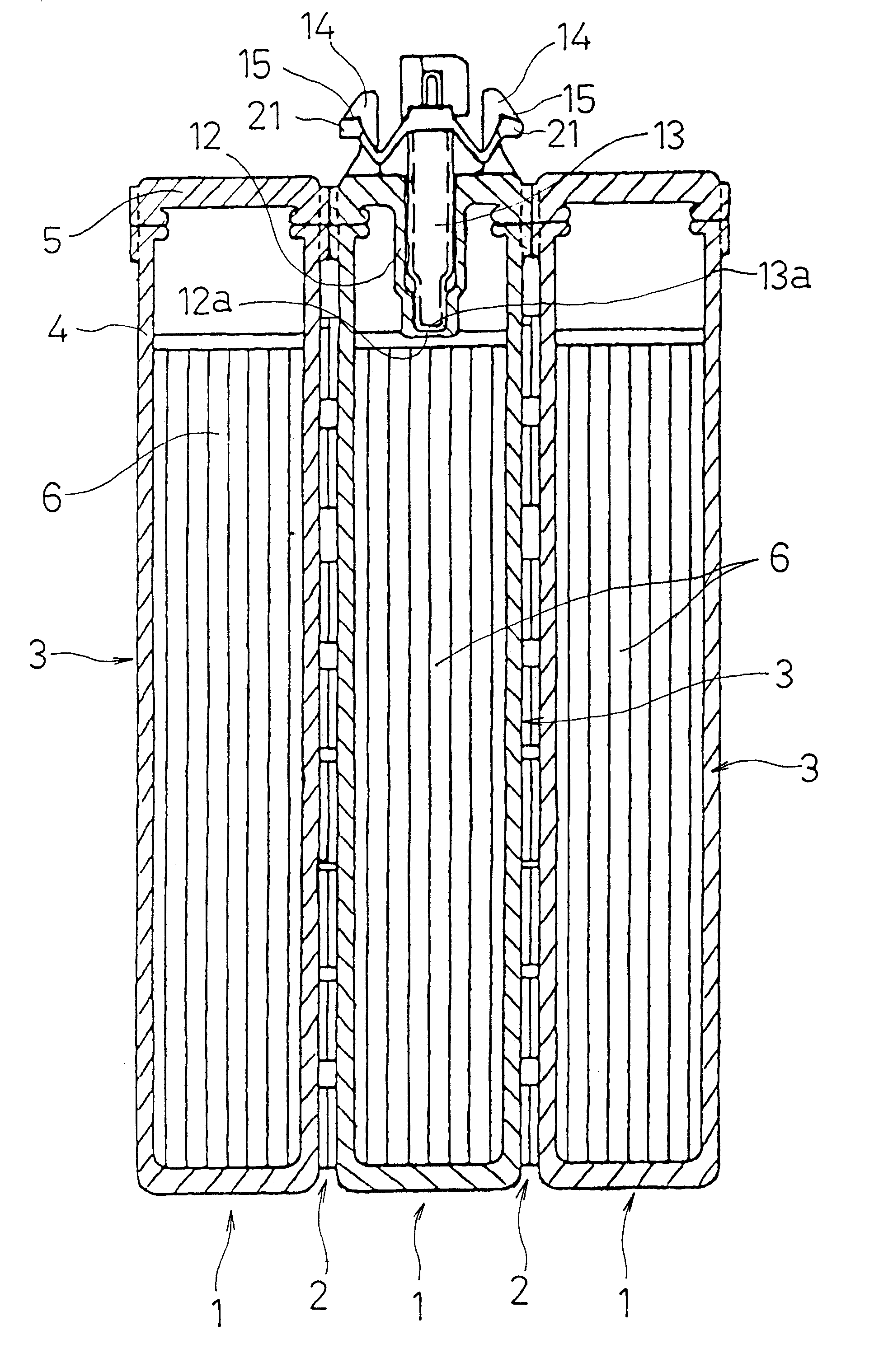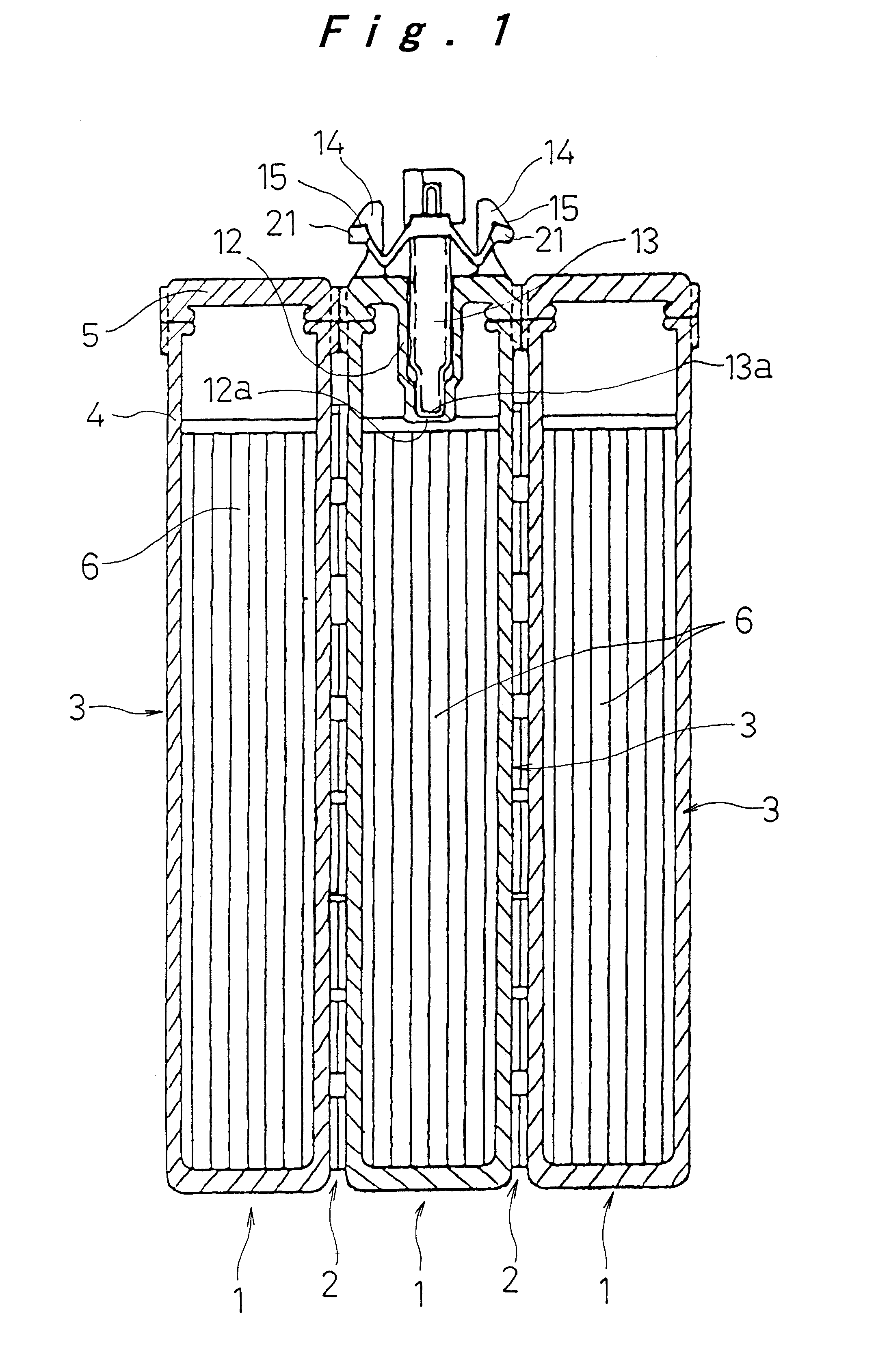Mounting structure for temperature detecting member in rechargeable battery
- Summary
- Abstract
- Description
- Claims
- Application Information
AI Technical Summary
Benefits of technology
Problems solved by technology
Method used
Image
Examples
Embodiment Construction
Preferred embodiments of a rechargeable battery in accordance with the present invention will be hereinafter described with reference to FIGS. 1 to 4.
The present invention is applied to a battery pack of nickel metal hydride batteries, which is suitable for use as a drive power source for an electric vehicle. As shown in FIG. 1, a plurality of rechargeable batteries 1 are arranged side by side, and connected electrically in series for use. Coolant passages 2 are formed between opposing walls of adjacent batteries 1 for forcibly cooling the batteries 1.
As shown in FIG. 1 and in FIG. 2, the rechargeable batteries 1 each comprise battery cases 3 made of hollow prismatic case bodies 4, of which upper open ends are closed integrally by a lid member 5. Elements for electromotive force 6 are accommodated inside each of the battery cases 3. The case bodies 4 and the lid member 5 that constitute battery cases 3 are made of a synthetic resin material, such as a PP / PPE alloy. Positive electrod...
PUM
 Login to View More
Login to View More Abstract
Description
Claims
Application Information
 Login to View More
Login to View More - R&D
- Intellectual Property
- Life Sciences
- Materials
- Tech Scout
- Unparalleled Data Quality
- Higher Quality Content
- 60% Fewer Hallucinations
Browse by: Latest US Patents, China's latest patents, Technical Efficacy Thesaurus, Application Domain, Technology Topic, Popular Technical Reports.
© 2025 PatSnap. All rights reserved.Legal|Privacy policy|Modern Slavery Act Transparency Statement|Sitemap|About US| Contact US: help@patsnap.com



